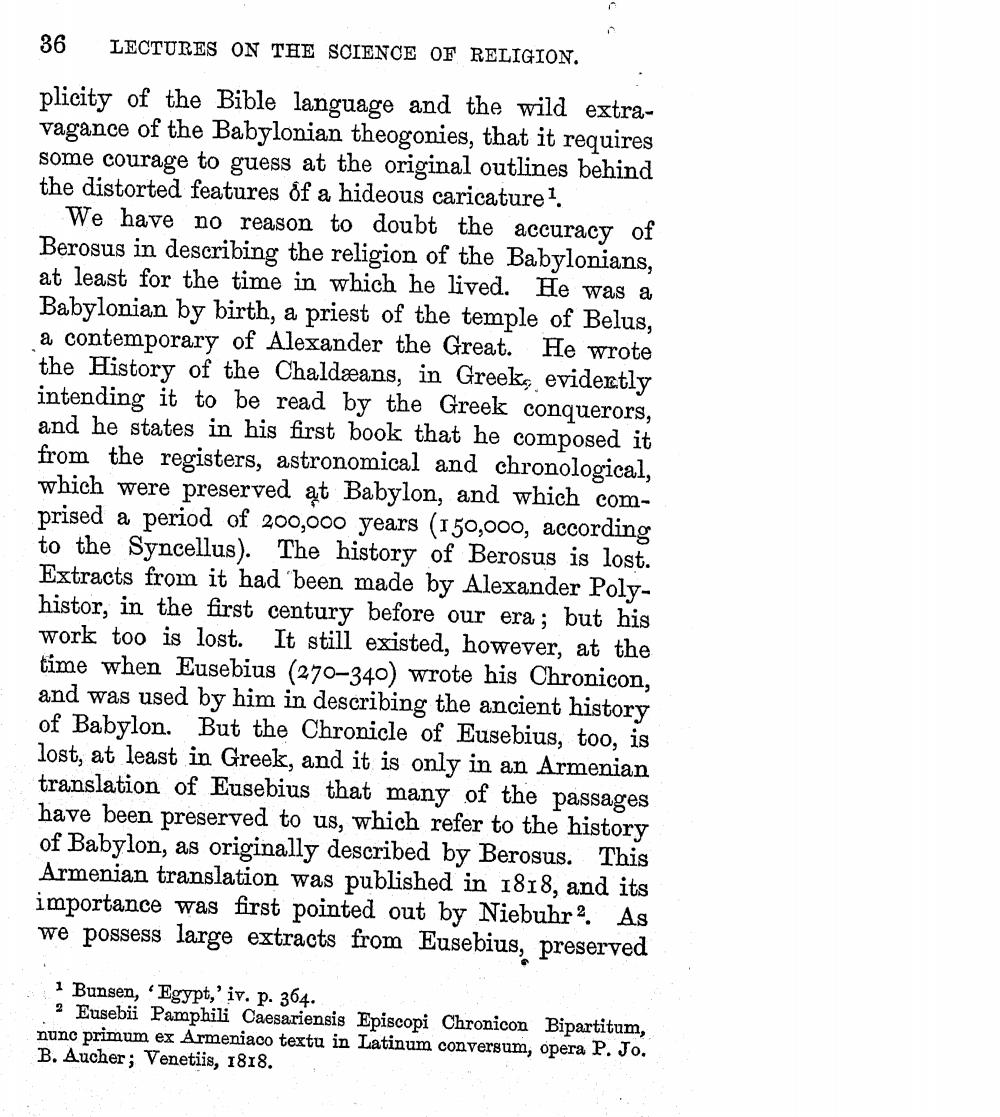________________
36 LECTURES ON THE SCIENCE OF RELIGION. plicity of the Bible language and the wild extravagance of the Babylonian theogonies, that it requires some courage to guess at the original outlines behind the distorted features of a hideous caricature 1.
We have no reason to doubt the accuracy of Berosus in describing the religion of the Babylonians, at least for the time in which he lived. He was a Babylonian by birth, a priest of the temple of Belus, a contemporary of Alexander the Great. He wrote the History of the Chaldæans, in Greeks, evidertly intending it to be read by the Greek conquerors, and he states in his first book that he composed it from the registers, astronomical and chronological, which were preserved at Babylon, and which comprised a period of 200,000 years (150,000, according to the Syncellus). The history of Berosus is lost. Extracts from it had been made by Alexander Polyhistor, in the first century before our era; but his work too is lost. It still existed, however, at the time when Eusebius (270-340) wrote his Chronicon, and was used by him in describing the ancient history of Babylon. But the Chronicle of Eusebius, too, is lost, at least in Greek, and it is only in an Armenian translation of Eusebius that many of the passages have been preserved to us, which refer to the history of Babylon, as originally described by Berosus. This Armenian translation was published in 1818, and its importance was first pointed out by Niebuhr2. As we possess large extracts from Eusebius, preserved
1 Bunsen, ' Egypt,' iv. p. 364.
? Eusebii Pamphili Caesariensis Episcopi Chronicon Bipartitum, nunc primum ex Armeniaco textu in Latinum conversum, opera P. Jo. B. Aucher; Venetiis, 1818.




